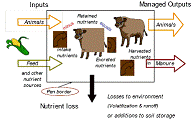Biological Systems Engineering, Department of

Department of Agricultural and Biological Systems Engineering: Presentations and White Papers
Date of this Version
11-2005
Document Type
Article
Abstract
Gene transfer has many potential applications in basic and applied sciences, including functional genomics, gene therapy, and tissue engineering. Substrate- mediated delivery, also termed solid phase delivery, describes the immobilization of DNA, complexed with nonviral vectors, to a biomaterial or substrate that supports cell adhesion. A critical component to this process is designing the appropriate interactions between the DNA complexes and substrate. The objective of this study was to investigate gene transfer as a function of i) complex formation and deposition conditions and ii) non-specific and specific binding interactions between the complexes and substrate. The volume and time of complex formation, and incubation time and volume were investigated for their effects on transfection efficiency. While nonspecific immobilization strategies have been used to enhance transfection in vitro, translating the substrate-mediated delivery approach to biomaterials for in vivo applications requires that the complexes be more effectively retained at the biomaterial surface. Self-assembled monolayers (SAMs) of alkanethiols on gold were used to study the mechanisms of transfection by complexes nonspecifically immobilized on chemically specific substrates, to determine appropriate biomaterial surface properties for efficient gene delivery. Surface hydrophilicity and ionization were found to mediate both immobilization and transfection. Furthermore, the ability of specifically tethered complexes to mediate transfection was investigated. DNA, complexed with polyethylenimine (PEI), was covalently linked to SAMs presenting appropriate functional groups through a fraction of the functional groups available on the PEI present in the complex. Complexes were directly coupled to the SAMs through degradable and non-degradable tethers. Covalently tethered complexes provide an approach to retain the complexes at the surface, particularly following exposure to serum. SAMs provide a versatile approach to identify covalent tethering strategies with the potential to be translated to biomaterial surfaces for use in tissue engineering applications.


Comments
Podium presentation, American Institute of Chemical Engineers Annual Meeting, Cincinnati, OH, November 1, 2005.